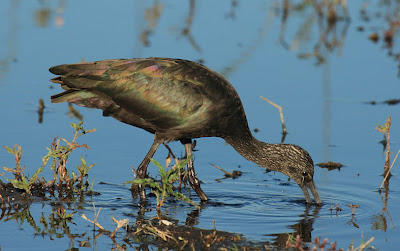There have been some interesting attempts to manage the Okavango Delta in the past, to ‘improve’ the provision of the ecosystem’s goods and services, but it is doubtful whether many of these were successful. The system is very dynamic and fluctuates hugely within natural bounds, moving to its own rhythm.
During the 1970s and 80s, the flood levels in the Okavango were higher than average, but by the end of this period they declined and the outflow down the Thamalakane and Boteti Rivers no longer reached Rakops and the Mopipi reservoir at the distal end. Since large quantities of water were needed at the Orapa diamond mine, the Nhabe Channel was blocked, thereby diverting water down the Boteti River towards the Mopipi reservoir from whence it was pumped to Orapa. Of course, this deprived people living along the Nhabe from their water supply, but by the mid-nineties this did not make any difference since the Okavango waters ended in Maun, some 25 kilometres short.

The position of the bund at the start of the Nhabe channel
Now with the return of higher floods imminent, Debswana has removed the bund at the mouth of the Nhabe Channel. This is in line with the Okavango Delta Management Plan, and is a highly commendable action aimed at restoring the Nhabe Channel. This watercourse flows westwards to Lake Ngami, some 80 kilometres distant. If it flows this year, it will recreate valuable waterfowl habitat, as well as improving the quality of life for people living along its length, illustrating once again that what is good for birds is generally good for people too. Despite the Nhabe being blocked, Lake Ngami has actually filled to varying extent over the past five years, being fed by the Kunyere Channel, and this is likely to continue, with any water reaching the Lake from the Nhabe being an added bonus.
 Work in progress - the pipes have been removed and the bund is being levelled (Photo: P Hancock)
Work in progress - the pipes have been removed and the bund is being levelled (Photo: P Hancock)The Nhabe Channel is likely to support significant numbers of ducks and geese once flows are restored, particularly Red-billed and Hottentot teal, White-faced Duck, Comb Ducks and Southern Pochard. For some reason, channels that have been dormant for a number of years (whether due to natural or man-made changes) attract vast numbers of waterfowl when they flow again, possibly due to a build-up of nutrients in the form of dung from the herbivores that graze along the channels when they are dry. It is expected that African Fish-Eagles and other piscivores such as Reed Cormorant and African Darter will soon recolonise the area.


It is likely that the Nhabe Channel will once again support large numbers of waterfowl (Photos: W Tarboton)
Once the Nhabe Channel becomes more permanent, aquatic vegetation in the form of reeds, sedges and waterlilies will become re-established, and provide suitable habitat for African and Lesser jacanas, African Pygmy-Geese and Whiskered Terns. The riparian woodland that has degenerated over the past two decades will also recover and boost numbers of frugivores such as Meyer’s Parrot, Burchell’s and Meves’s starling, Black-collared Barbet and Grey Go-away-bird.
 African Fish-Eagles will quickly colonise the Nhabe
African Fish-Eagles will quickly colonise the Nhabe










